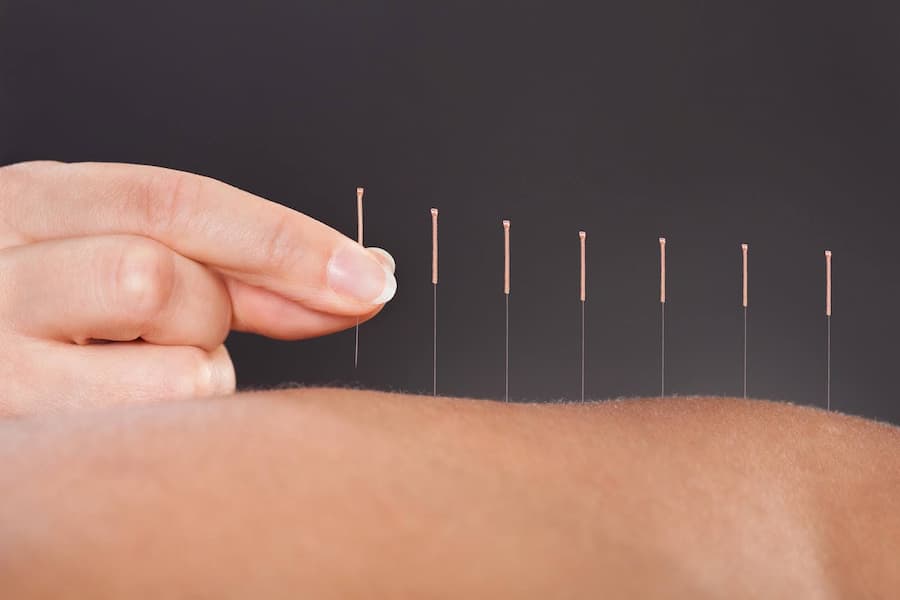Acupuncture, a traditional Chinese medicine practice, has been used for thousands of years to treat a variety of health issues. It entails inserting thin needles into specific points on the body known as acupoints to stimulate the flow of “qi,” a vital energy thought to circulate throughout the body.

Acupuncture supplements the main therapy in Swiss Medica by producing the following effects:
- Reducing pain: Studies suggest that acupuncture can effectively relieve pain associated with conditions like chronic back pain, headaches, arthritis, and even cancer pain. It is thought to work by releasing endorphins, natural pain-relieving chemicals, in the body.
- Improving sleep: Acupuncture is effective for treating insomnia and other sleep disorders. It may regulate the body’s natural sleep-wake cycle, promote relaxation, and reduce anxiety.
- Immunity boost: The procedure can strengthen the immune system, allowing the body to fight off infections and disease more effectively.
- Managing stress: Acupuncture has a calming effect on the nervous system, which can help reduce stress and anxiety. It may also improve mood and overall well-being.
- Regulating hormones: Acupuncture may help regulate hormone imbalances, which can affect various aspects of health, including fertility, menstrual cycles, and mood.
It is important to note that, while acupuncture can help some people with chronic diseases, it is not a stand-alone treatment. It is frequently used as part of a broader treatment strategy that may include medications, lifestyle changes, and other therapies.
Get a free online consultation
Consult with our medical advisors to determine if acupuncture could be the right choice for you.

Medical Advisor, Swiss Medica doctor
Ready to Explore More?
Discover the full potential of stem cells and dive into additional insightful articles.
List of References
Trinh K, Graham N, Irnich D, Cameron ID, Forget M. Acupuncture for neck disorders. Cochrane Database Syst Rev. 2016 May 4;(5):CD004870. doi: 10.1002/14651858.CD004870.pub4. Update in: Cochrane Database Syst Rev. 2016 Nov 17;11:CD004870. doi.org/10.1002/14651858.CD004870.pub5